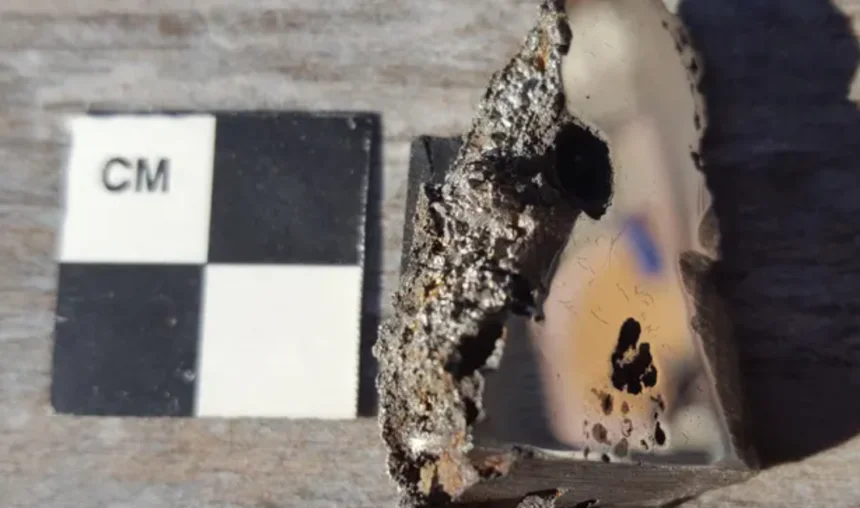After analysing a piece of a 15-tonne meteorite that crashed in east Africa, a team of Canadian researchers claims to have identified two new minerals — and maybe a third.
The meteorite, which is almost 2 metres wide and the ninth largest ever discovered, was found in Somalia in 2020, yet local camel herders claim it has been known to them for years and has been titled Nightfall in their songs and poems.
Western scientists, on the other hand, named the extraterrestrial rock El Ali after its discovery near the town of El Ali in the Hiiraan region. A 70-gram piece of the iron-based meteorite was transported to the meteorite collection at the University of Alberta for classification.
Professor of earth and atmospheric sciences Dr Chris Herd, who is also the collection’s curator, claimed that when identifying the rock, he discovered “unusual” minerals. Herd requested an investigation from Andrew Locock, director of the university’s electron microprobe lab.”
You’ve got at least two new minerals in there, he commented on the very first day he conducted some analyses,” according to Herd. “That was incredible. To declare the existence of a new mineral typically requires much more research.
According to Herd, similar minerals had been created in a lab in the 1980s but had never been observed in nature. Herd also said that these new minerals may provide insight into how “nature’s laboratory” works and may have yet-unknown applications in the real world. The analysis of a third putative new mineral is ongoing.
Herd stated, “I never imagined that working on a meteorite would lead to my being engaged in describing brand-new minerals. This particular meteorite has two officially described new minerals, which is what makes it exciting. Elaliite, after the meteorite’s location, and Elkins-Tanton, the principal investigator of NASA’s future Psyche project, which seeks to send a spacecraft to a metal-rich asteroid, are the names given to them.”
“Lindy has done a great deal of work on how the cores of planets form, how these iron-nickel cores form, and the iron meteorites we have are the closest analogues we have. Therefore, it was fitting to honour her scientific efforts by naming a mineral after her, according to Herd.
Scientists from the University of Alberta want to investigate further samples from the same meteorite, but Herd said there have been reports that it has been transported to China. International markets see a lot of trade in meteorites.












